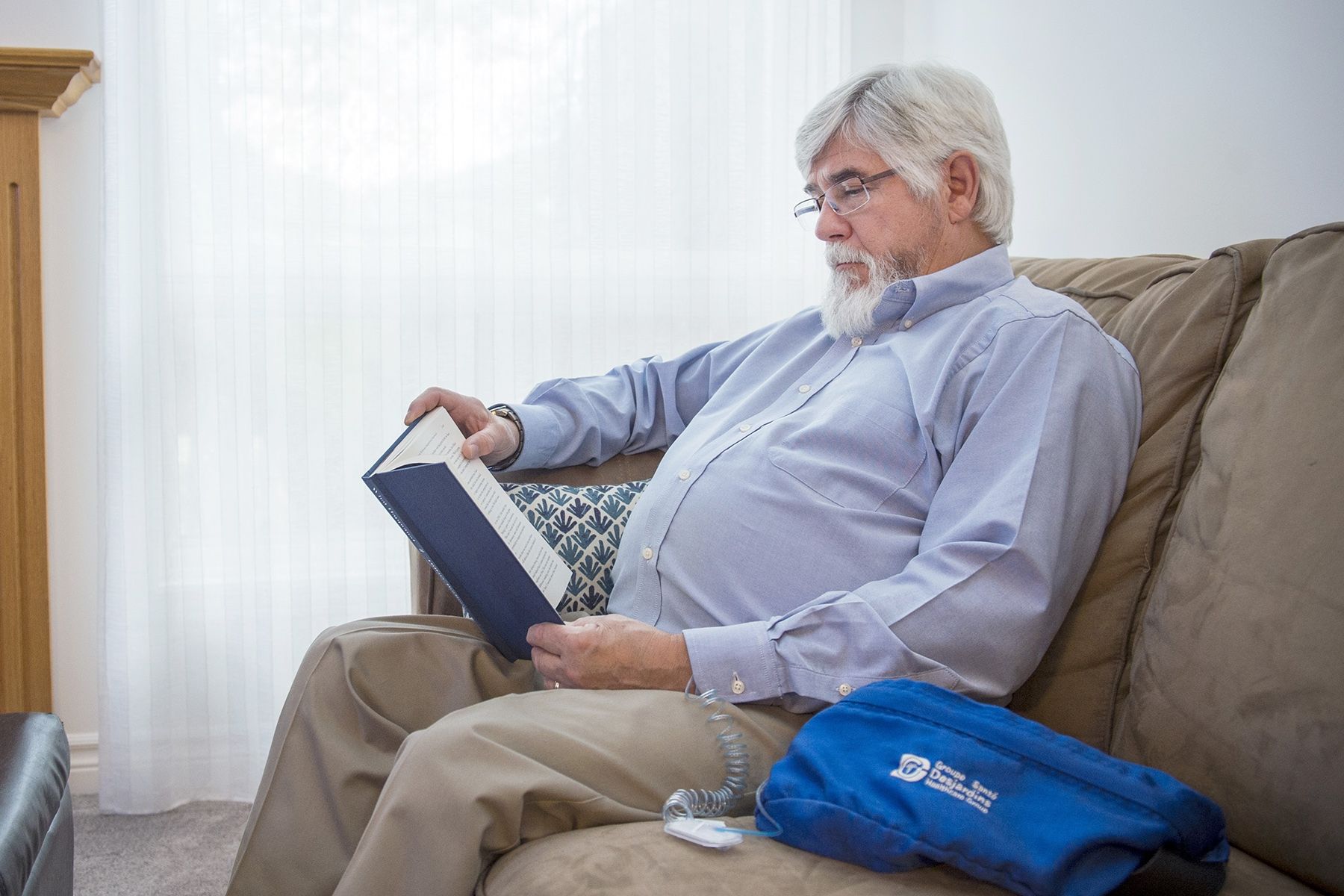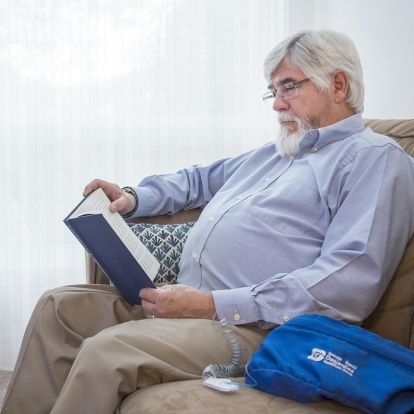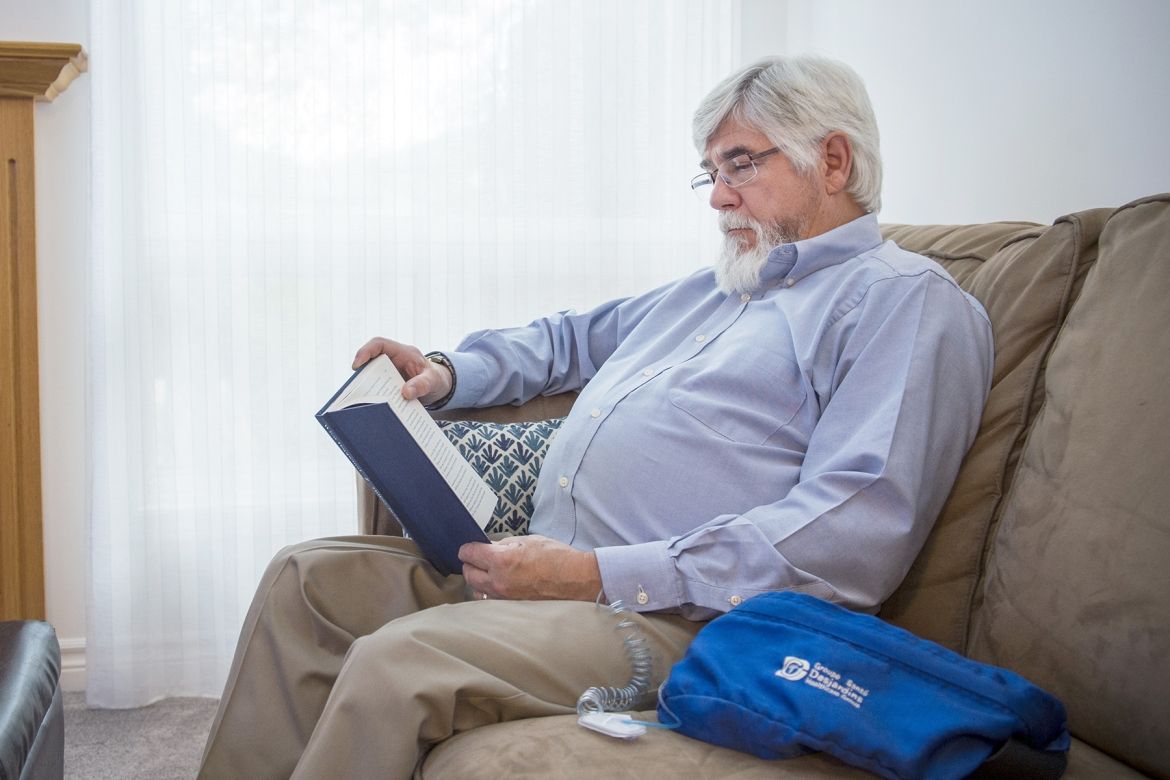Effective immediately masking is required for everyone when present on all inpatient units, in the Emergency Department (ED), the Urgent Care Centre (UCC), and the Children’s Outpatient Centre (COPC).

A new initiative out of the Cancer Centre of Southeastern Ontario is helping patients stay out of the hospital and receive their chemotherapy treatment at home.
Known as the Chemotherapy at Home program, this initiative allows patients who require continuous chemotherapy to receive it through a pump that they wear as they go about their day. This change has been a positive step for patients who previously had to stay in the hospital to receive their chemotherapy treatment.
“We had patients staying at the hospital for seven-to-ten days to receive chemotherapy treatment every three weeks. This could last for 6-8 months, but the patients were feeling well enough and were asking if outpatient treatment was possible,” says Kardi Kennedy, Regional Systemic Treatment Program Lead. “From their feedback we saw an opportunity to help deliver better care to our patients that would help keep them out of the hospital and enable them to return to a more regular life with their families.”
To help transition patients to receive treatment on an outpatient basis, the Cancer Centre which is located at Kingston Health Sciences Centre's KGH site, obtained a number of Continuous Administration Delivery Device (CADD) pumps. The pumps infuse chemotherapy through an IV line and are programmed to give chemotherapy at a specific rate, depending on each patient's care plan. The pump is placed in a carrying case that is worn around a patient’s waist, allowing them to go about their day without being confined to a bed.
“We relied heavily on our patient’s feedback and would change our approach based on their experience and input,” says Kennedy. “Ultimately, we knew that we wanted to create an approach that would meet our patient's care needs while also helping them go about their lives in as normal and routine a way as possible.”
Part of this process involved running a trial with patients. Greg Brown was the first patient to receive this care at home.
“When I first started my treatment I was staying at the hospital for up to five days in a row, missing out on my kids’ lives, my family and work. The most frustrating part was that I still felt well enough to be able to move around and continue some of my regular activities, but by staying in hospital I was limited with what I could do,” says Greg. “It didn’t make sense to me to be taking up a hospital bed that could be given to someone who needed around the clock care, which was not where I was at with my treatment.”
For Brown, being able to receive his treatment at home helped him to return to a more regular routine.
“It was such a great feeling to be able to sleep in my own bed while receiving treatment and not have people coming and going into my room at all hours of the night; it not only allowed me to be more involved in my family’s life but it also lessened the impact that my cancer treatment had on them,” says Brown. “By having the CADD pump I was even able to participate in some work meetings and be there for my kids when they got home from school.”
Since this program launched, 10 patients have been able to participate and receive their chemotherapy treatment on an outpatient basis, freeing up hospital bed space and allowing them to have the care they need at home.
Currently, this program is being offered for patients requiring chemotherapy treatment for aggressive non-Hodgkin’s lymphoma and complex hematology cancer treatments. Plans are underway to expand this as an option for autologous stem cell transplant patients.
“We are always looking for ways to help deliver the best care to our patients in as close to home as possible,” says Dr. Tara Baetz, Regional Quality Lead, Systemic Treatment Program. “This has been a great initiative to put in place for our patients and highlights how important including their voice into this process has been.”
Gallery


Chemotherapy is delivered by a CADD pump which allows patients to go about their day without being confined to a bed



